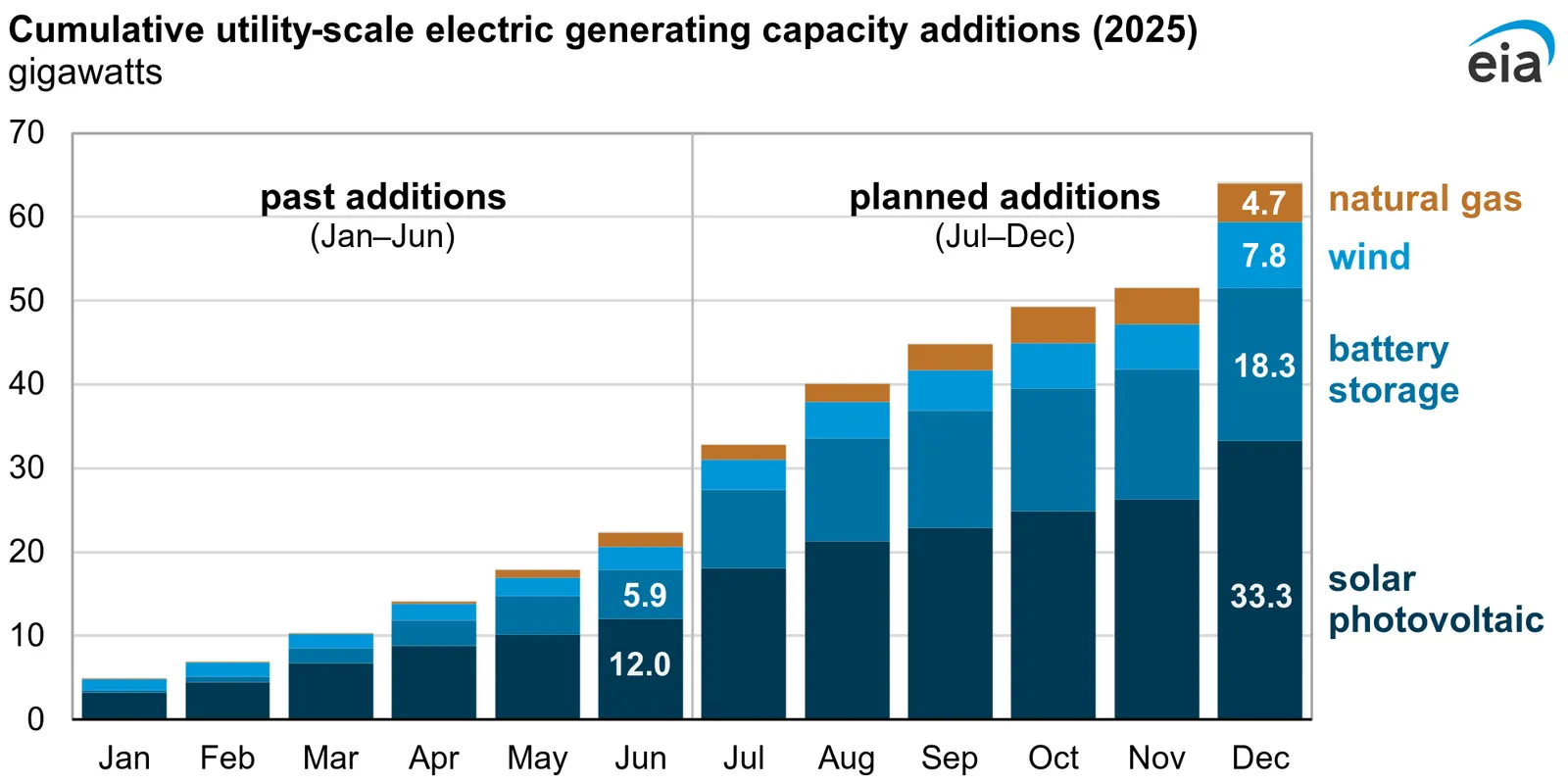Global solar installations rise 64% to 380 GW in first half of 2025

Worldwide, 380 GW of new solar capacity was installed in the first half of this year, marking a 64% increase from 2024, when 232 GW was installed in the same timeframe, according to a report from the clean energy think tank Ember.
“In 2024, it took until September for global solar capacity additions to surpass 350 GW, while in 2025, the milestone was reached in June,” Ember said in a Tuesday release.
China led the pack in solar installations, adding 256 GW — more than twice as much solar capacity as the rest of the world combined — and making up 67% of the global total, Ember said. In comparison, in the first half of 2024, 54% of global installations were in China.
India came in second behind China, installing 24 GW, while the U.S. installed 21 GW, “up 4% year-on-year, despite recent moves by the US government to restrict clean power deployment,” Ember said.
“The rapid expansion of solar capacity in recent years has made it the fastest growing source of new electricity generation,” Ember said. “In 2024, global solar output rose by 28% (+469 TWh) compared to 2023, more than any other source.”
An Aug. 20 report from the U.S. Energy Information Administration said developers the agency surveyed plan to add another 21 GW of solar capacity in the U.S. over the second half of 2025, after adding 12 GW in the first half of the year. Renewables made up 91% of the 15 GW of generation the US added in first five months of 2025, according to the Federal Energy Regulatory Commission.
“If those plans are realized, solar would account for more than half of the 64 GW that developers plan to bring online this year,” EIA said. “Battery storage, wind, and natural gas power plants account for virtually all of the remaining capacity additions for 2025.”

If all 64 GW of planned capacity additions come online this year, it would set a new record, outstripping the previous 58 GW record set in 2002, which was driven almost entirely by natural gas additions.
“Although developers have added natural gas-fired capacity each year since then, other technologies such as wind, solar, and battery storage have become more prevalent options for new capacity,” EIA said.
utilitydive





